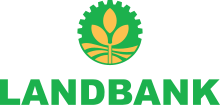Land Bank of the Philippines
Land Bank of the Philippines (Filipino: Bangko sa Lupa ng Pilipinas, Spanish: Banco Hipotecario de Filipinas), stylized as LANDBANK or also known by its initials, LBP, is a universal bank in the Philippines owned by the Philippine government with a special focus on serving the needs of farmers and fishermen. While it provides the services of a universal bank, it is officially classified as a "specialized government bank" with a universal banking license.
 | |
| State-owned | |
| Industry | Finance and Insurance |
| Founded | 1963 in Manila, Philippines |
| Founder | Government of the Philippines |
| Headquarters | Malate, Manila, Philippines |
Key people |
|
| Products | Financial services |
| Revenue | ₱31.37 billion (2009) |
| ₱13.6 billion ( | |
| Total assets | ₱1.4 trillion ( |
Number of employees | 7,954 |
| Website | www |
Landbank is the fourth largest bank in the Philippines in terms of assets and is the largest government-owned bank. It is also one of the biggest government owned and controlled corporations in the Philippines.
Unlike most Philippine banks, Landbank has an extensive rural branch network with 365 Branches/Units and 1,607 ATMs.[2] It services many rural sector clients in areas where banking is either limited to rural banks or is non-existent.
In 2015, it planned to merge with DBP but it did not push through.[3]
On February 4, 2016, President Benigno Aquino III approved the Executive Order #198 on the merger between Land Bank and the DBP, with the former as the surviving entity.[4]
History
Landbank was established on August 8, 1963 as part of the Agricultural Land Reform Code as part of a program of land reform in the Philippines. It was to help with the purchase of agricultural estates for division and resale to small landholders and the purchase of land by the agricultural lessee. In 1965, Landbank's by-laws were approved and its first board of trustees was formed, with the Secretary of Finance as Chairman.
On October 21, 1972, Presidential Decree No. 27, signed by President Ferdinand Marcos, emancipated all tenant farmers working on private agricultural lands devoted to rice and corn, whether working on a landed estate or not. The system was implemented through a system of sharecropping or lease-tenancy. Landbank was tasked to collect 15-year land amortizations from beneficiaries at the cost of the value of the land plus six percent interest per annum.
By 1973, Landbank was in financial distress. It lacked the resources and the capital needed to implement the land reform programs and lacked the structure to implement the programs efficiently. On July 21, Marcos signed Presidential Decree No. 251 which revitalized the bank. The decree granted Landbank a universal banking license (the first bank in the Philippines to be issued such a license) with a social mission to spur countryside development. The decree expanded Landbank's powers to include lending for agricultural, industrial, homebuilding and home-financing projects and other productive enterprises, as well as lending to farmers' cooperatives and associations to facilitate production, marketing of crops and acquisition of essential commodities. Landbank was also required by the decree to provide timely and adequate support in all phases involved in the execution of agrarian reform and also increased its authorized capital to 3 billion pesos. It also became exempted from all national, provincial, city and municipal taxes and assessments.
Landbank was reorganized in 1977 when it was divided into three sectors to better assess the needs of its customers. It was divided into Agrarian, Banking and Operations sectors to strengthen operations and ensure long-term viability.
In 1982, the Agricultural Credit Administration (ACA), established under the same law as Landbank, was abolished and all its assets and functions transferred to Landbank. ACA's function was to extend credit to small farmers. Also in this year, Union Bank of the Philippines (UnionBank) was formed, with Landbank having a 40-percent stake in the government-owned commercial bank.
Landbank became the financial intermediary for the Comprehensive Agrarian Reform Program (CARP) in 1988. It was also in that year that UnionBank started a gradual privatization. The Aboitiz Group of Companies acquired Landbank's 40% share of UnionBank then which it continues to own. LANDBANK also became the third member of Expressnet, an interbank network in December 1991 but now a BancNet member.
On February 23, 1995, Landbank's charter was once again amended. Its authorized capital was increased to nine billion pesos and it became an official government depository. The number of members of the board of trustees was also increased to nine. On August 25, 1998, Landbank's authorized capital was once again increased to 25 billion pesos, and it then increased to 200 billion pesos, after the DBP-Landbank merger in 2016.
Current operations
Landbank competes against the major banks such as Metrobank, Bank of the Philippine Islands (BPI), Banco de Oro and Philippine National Bank (PNB). In rural areas, it either competes against or complements rural banks.
On the other end of the spectrum, Landbank takes on a dual role with the Development Bank of the Philippines, another government-owned bank. It either competes against or works with DBP, depending on the situation.
Subsidiaries and affiliates
Landbank has the following subsidiaries and affiliates:
- LBP Leasing Corporation
- LBP Insurance Brokerage
- LBP Resources and Development Corporation (former LB (Landbank) Realty Development Corporation)
- Masaganang Sakahan, Inc.
- LBP Countryside Development Foundation, Inc.
- Overseas Filipino Bank
References
- "Archived copy". Archived from the original on July 21, 2006. Retrieved August 7, 2006.CS1 maint: archived copy as title (link)
- "Corporate Profile". LANDBANK Website.
- "Landbank-DBP merger shelved for now". BusinessWorld. Retrieved January 5, 2016.
- "Aquino OKs Landbank-DBP merger". Rappler. February 9, 2016. Retrieved February 9, 2016.